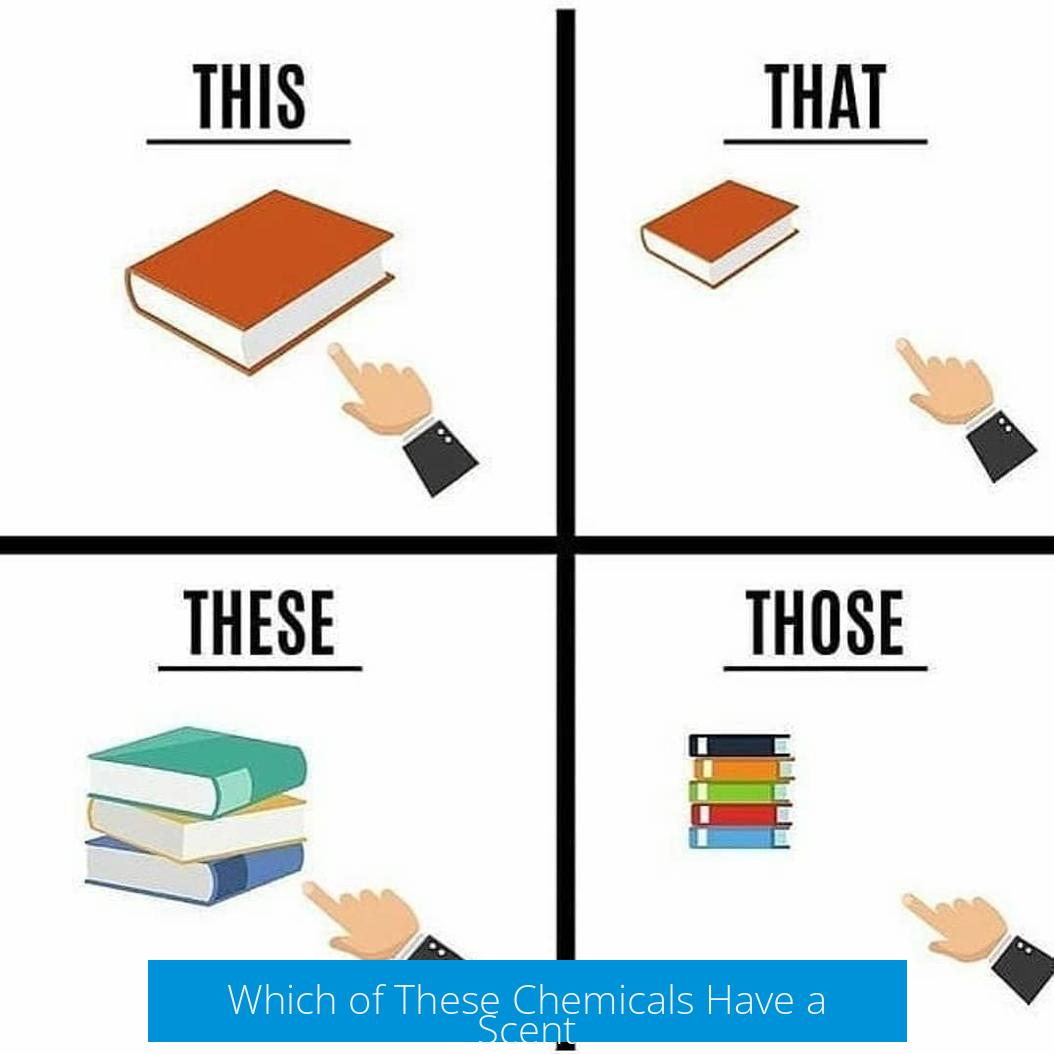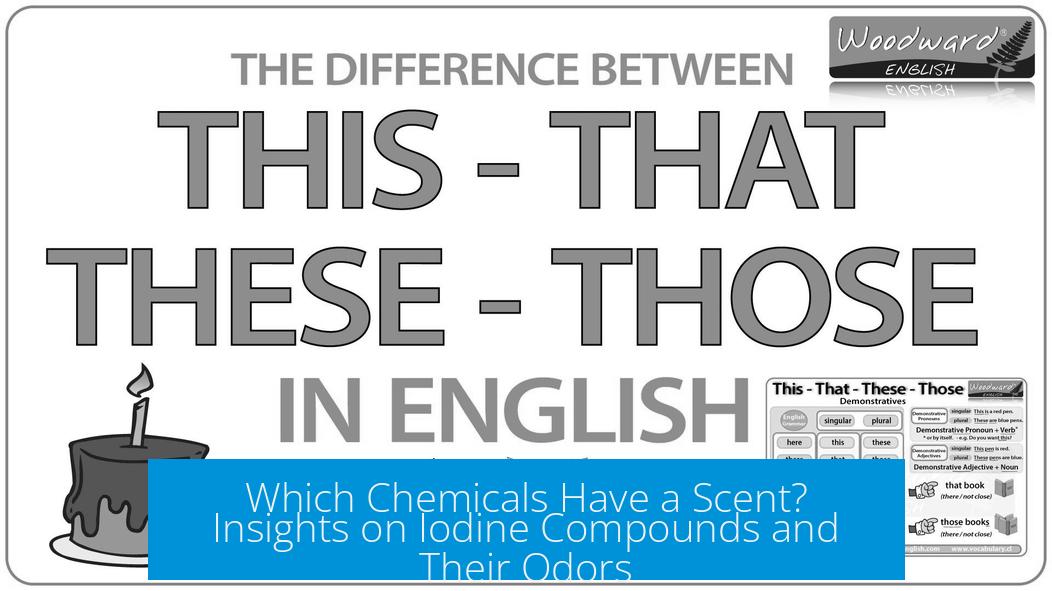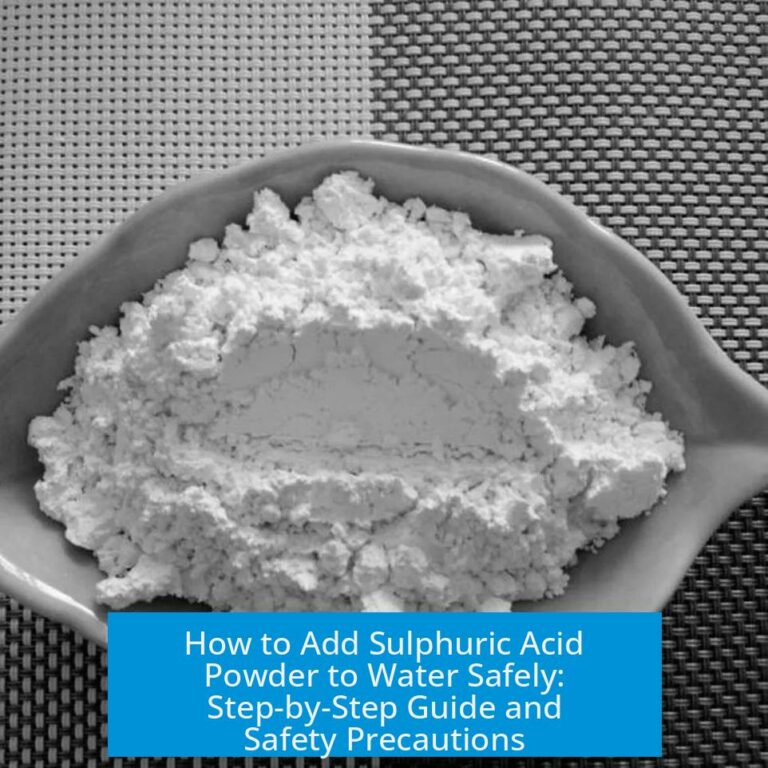Which of These Chemicals Have a Scent?

Iodine compounds, particularly iodine and iodoform, possess distinct scents. Potassium iodide, however, generally does not have a noticeable smell.
Iodine Compounds and Their Characteristic Odors
Iodine itself produces a sharp, distinctive odor familiar from medical settings where it serves as an antiseptic. This scent is often described as pungent and metallic.
The presence of iodine vapor causes the recognizable smell. It arises because iodine sublimes easily, releasing vapor that interacts with olfactory receptors.
Iodoform’s Notable Scent
Iodoform (CHI3) is known for its strong, medicated smell. It has a sweetish yet persistent scent often associated with antiseptic treatments.
This chemical’s odor makes it easily identifiable and links it to historical medical uses. Its smell arises from its molecular structure and volatility.
Potassium Iodide’s Lack of Odor
Potassium iodide (KI) does not emit a distinct odor. It is a crystalline compound soluble in water and typically odorless.
Unlike iodine or iodoform, potassium iodide does not release vapor or aromatic molecules under standard conditions, so it remains scentless.
Summary Table: Chemical Scents

| Chemical | Characteristic Scent | Comments |
|---|---|---|
| Iodine | Sharp, pungent, metallic | Common in antiseptics; smells due to vapor |
| Iodoform | Strong, sweetish, medicated | Associated with medical antiseptics |
| Potassium Iodide | Odorless | No vapor release; crystalline solid |
Key Takeaways
- Iodine and iodoform have distinct, recognizable scents.
- Iodine’s smell stems from its vapor phase presence.
- Iodoform emits a sweet, medicated odor linked to antiseptic use.
- Potassium iodide lacks any notable scent under normal conditions.
Which of These Chemicals Have a Scent?
Ever caught a whiff of something unique and asked yourself, “What chemical on Earth smells like that?” Well, you’re not alone. Certain chemicals have very distinct scents. Knowing which ones do—and why—can be both fascinating and oddly useful. So, which of these chemicals have a scent? Spoiler alert: iodine compounds and their relatives definitely make the cut.
Let’s dive right in and clear the air—pun intended.
Iodine Compounds: The Medical Office Odor You Know
Walking into a doctor’s office almost always triggers that familiar smell. It’s not your imagination; it’s iodine compounds. These chemicals have a very distinct, sharp, and slightly metallic scent that many people instantly recognize. Traditionally, iodine is used as a disinfectant, making it a hospital mainstay.
Here’s a quick fact for you: when iodine vaporizes, it produces a scent that’s easy to detect even at low concentrations. This is why your nose can pick it up despite its medical precision. Ever wonder why antiseptic wipes carry that smell? It’s iodine’s magic at work.
Interestingly, this scent is so linked with cleanliness and sanitation that it can trigger psychological feelings of sterility and caution. So, next time you smell that sharp chemical tang, you’re likely smelling iodine compounds in action.
Iodoform: The Famous Scent with an Old-Timey Vibe

If iodine compounds are the stars, iodoform is the quirky cousin with a very standout scent. This chemical is battleground-famous for its distinctive, strong odor. Many describe it as medicinal, almost camphor-like but with a twist that’s unmistakable.
Why does iodoform smell so noticeable? Simply put, its molecular structure allows it to vaporize quite easily, releasing fragrance molecules that our noses catch quickly. This scent isn’t just for show—iodoform has been historically used in medical treatments, often dressing wounds. Its smell became iconic in hospitals long before modern antiseptics took over.
Now, while its scent typically brings images of a vintage clinic or old medical dramas to mind, it serves a practical purpose as well. The strong scent usually warns people of its presence, a handy courtesy in chemical safety.
Potassium Iodide: The Quiet Chemical Cousin
Unlike iodine or iodoform, potassium iodide is a bit shy when it comes to scent. You might think it smells like its iodine buddies, but that’s not usually the case.
Potassium iodide is mostly odorless in its pure state. So, if you’re sniffing around for a tell-tale scent, this one might not wave a chemical flag at you. The lack of smell makes it quite useful in situations where you want the benefits of iodine ions without that strong scent tagging along.
This doesn’t mean potassium iodide is unimportant. Far from it—it’s widely used in medicine and nutrition. But when it comes to scent, it’s a wallflower standing quietly in the corner.
Why Do Some Chemicals Have a Scent and Others Don’t?
Good question! The difference boils down to volatility and molecular structure. Chemicals that easily evaporate into the air tend to have a scent. Our noses detect these airborne molecules and translate them into recognizable smells.
Iodine compounds and iodoform are more volatile, meaning they readily move from solid or liquid into gas at room temperature, releasing scent molecules continuously. Potassium iodide, however, is less volatile. It stays put in solid or dissolved form and doesn’t send many odor molecules into the air.
So, the next time you wonder if a chemical has a scent, ask yourself: Is it volatile? Can it easily vaporize? If yes, chances are you’ll catch its fragrance.
What Does This Mean for Everyday Life?
- Medical Settings: The scent of iodine compounds and iodoform instantly signals sanitation and caution.
- Safety: Smell acts as a natural warning system; strong chemical scents often mean handle with care.
- Product Selection: If you dislike strong chemical odors, consider products containing potassium iodide instead of iodine tinctures.
Curious about making your own antiseptic without the strong smell? Consider exploring alternatives with less volatile compounds. The scent might be gone—but the protection stays.
Wrapping It Up with a Sniff
In conclusion, iodine compounds and iodoform definitely have a scent. Their medical, sharp odors have stamped memories in many of our minds. On the flip side, potassium iodide stands silent and odorless, quietly doing its job without broadcast.
Understanding these scents helps demystify everyday smells and connects you with the fascinating chemistry behind them. So next time you catch that medicinal aroma, you’ll know exactly which chemical is greeting you—and maybe even impress friends with your scent-savvy chemistry skills.
Which iodine compounds have a scent?
Iodine compounds, such as elemental iodine and iodoform, have distinct odors. These scents are often linked to their use in medical settings.
Does iodoform have a specific smell?
Yes, iodoform is known for its strong, characteristic smell. It is commonly associated with medical disinfectants.
Is potassium iodide scented?
Potassium iodide itself is generally odorless. The scent linked to iodine often comes from other iodine compounds, not potassium iodide.
Why do iodine compounds smell like a medical office?
The scent comes from the iodine used in disinfectants. Iodine’s distinct smell is recognizable and often linked to hospitals and clinics.
Are all chemicals containing iodine scented?
Not all iodine-containing chemicals have a noticeable smell. Some, like potassium iodide, are virtually odorless, while others, like iodoform, have a strong scent.





Leave a Comment